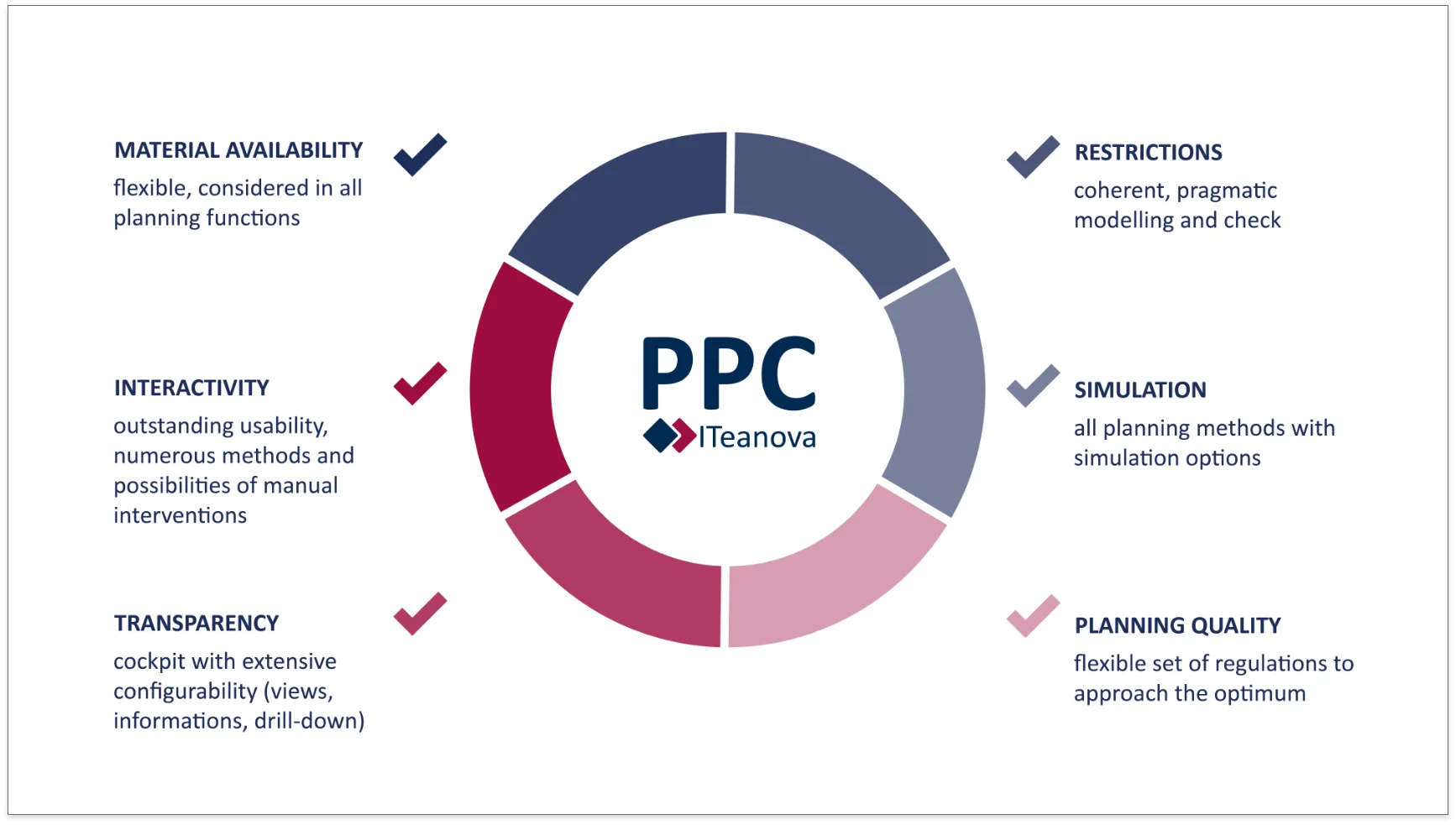The fact that, due to the complete integration of the PPC in
SAP ERP, the planning objects used (master data and
transaction data) are identical to those they know from
working with the SAP ERP Standard, facilitates working with
the PPC considerably for many customers.
Whenever SAP ERP external planning tools are used, the data
model of these tools is not identical to that of SAP ERP! As a
result, the customer has to acquire mapping knowledge about
which data is stored in SAP ERP and which data corresponds to
the external planning tool. This effort is completely
eliminated with the PPC, which many customers appreciate and
which simplifies the introduction, training and explanation
enormously.
This also eliminates the need for physical data transfer to
the PPC and back, which also avoids
risks of data inconsistencies.
